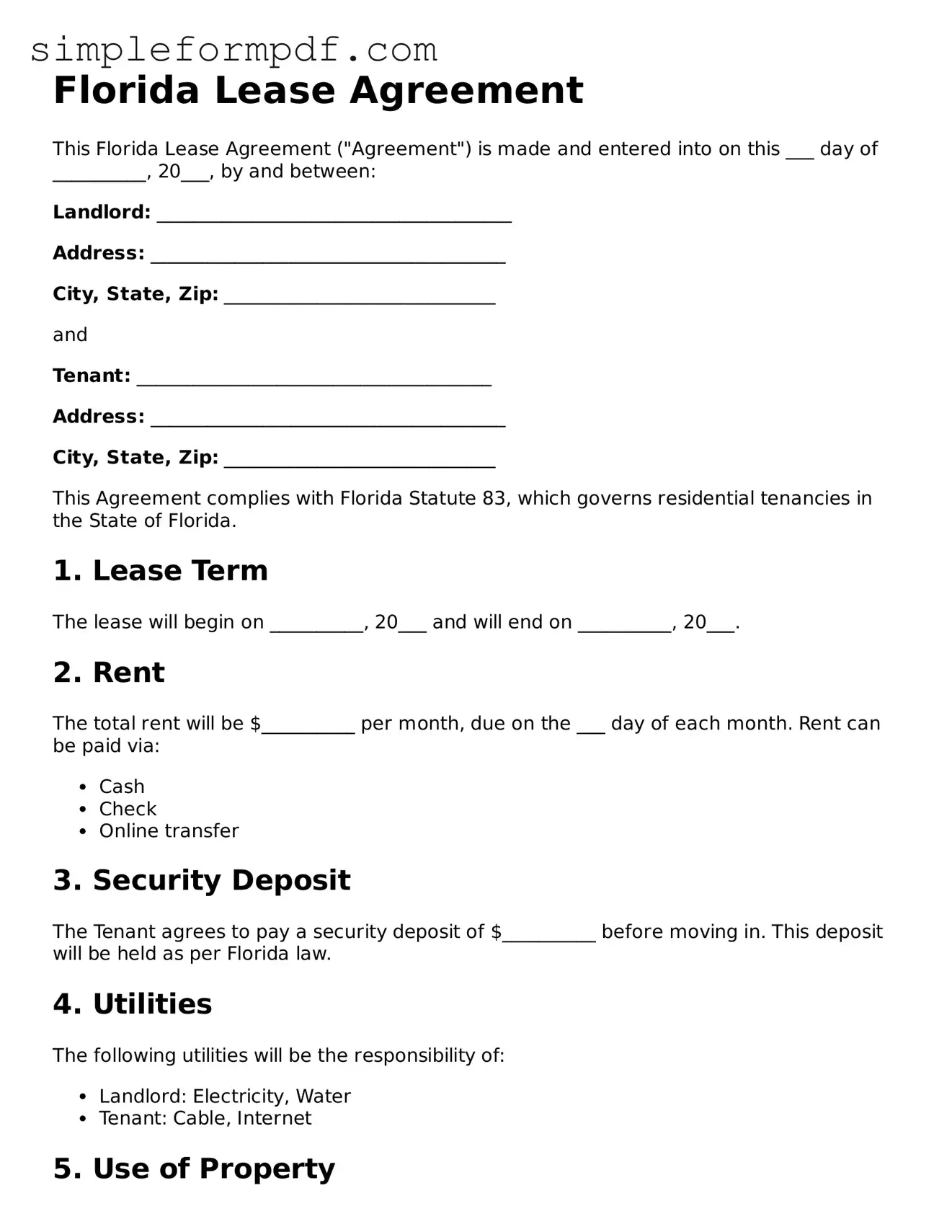Florida Lease Agreement
This Florida Lease Agreement ("Agreement") is made and entered into on this ___ day of __________, 20___, by and between:
Landlord: ______________________________________
Address: ______________________________________
City, State, Zip: _____________________________
and
Tenant: ______________________________________
Address: ______________________________________
City, State, Zip: _____________________________
This Agreement complies with Florida Statute 83, which governs residential tenancies in the State of Florida.
1. Lease Term
The lease will begin on __________, 20___ and will end on __________, 20___.
2. Rent
The total rent will be $__________ per month, due on the ___ day of each month. Rent can be paid via:
- Cash
- Check
- Online transfer
3. Security Deposit
The Tenant agrees to pay a security deposit of $__________ before moving in. This deposit will be held as per Florida law.
4. Utilities
The following utilities will be the responsibility of:
- Landlord: Electricity, Water
- Tenant: Cable, Internet
5. Use of Property
The property will be used exclusively for residential purposes. No commercial activities are allowed.
6. Maintenance and Repairs
The Landlord is responsible for major repairs. The Tenant must keep the premises clean and notify the Landlord of any required repairs.
7. Termination
This Agreement can be terminated under the following conditions:
- By the Tenant, with a written notice 30 days before the desired move-out date.
- By the Landlord, for cause, after providing appropriate notice as required by law.
8. Governing Law
This Agreement will be governed by the laws of the State of Florida.
Signatures
IN WITNESS WHEREOF, the parties hereto have executed this Agreement on the day and year first above written.
Landlord Signature: _________________________
Tenant Signature: __________________________
